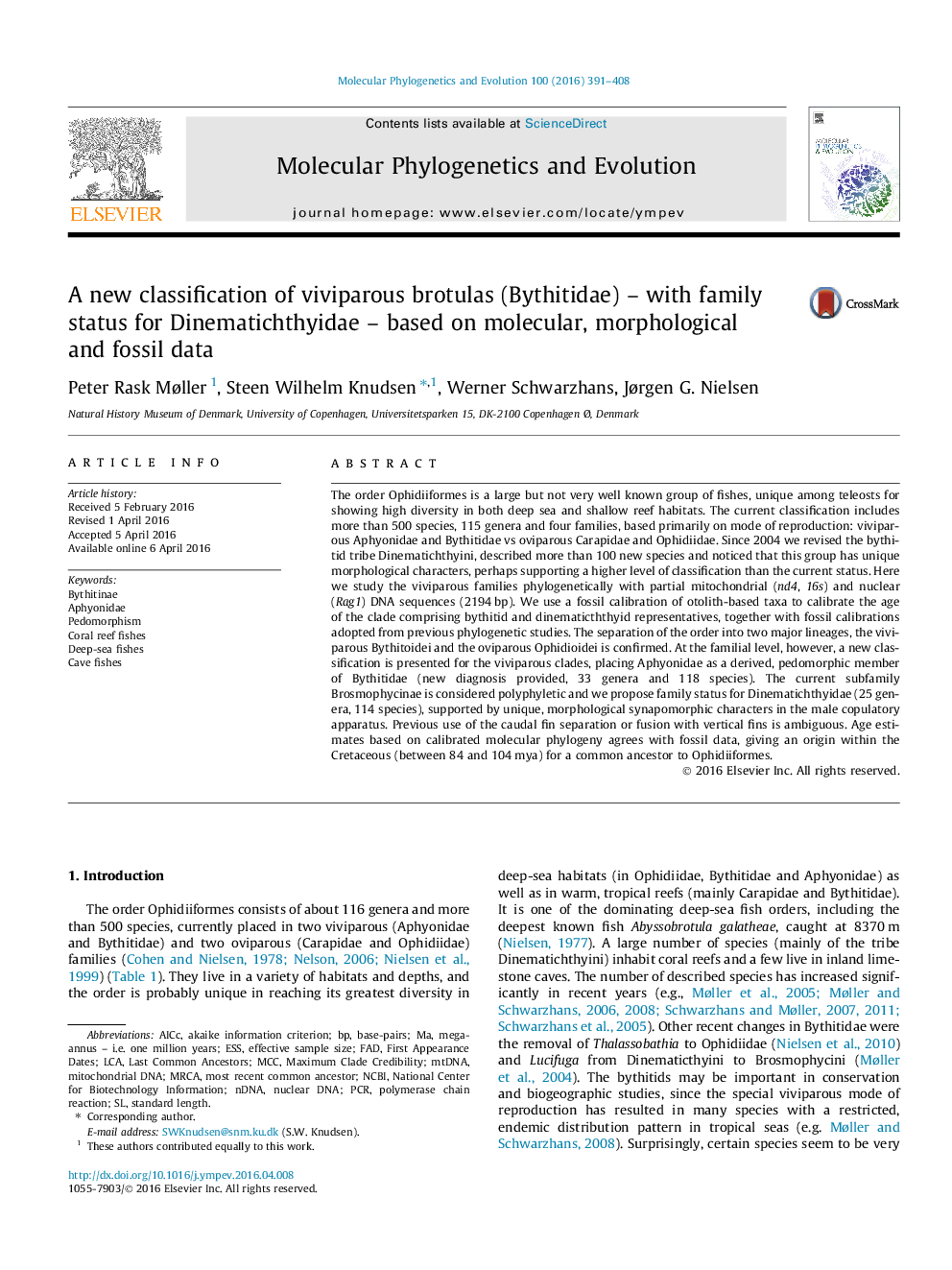| کد مقاله | کد نشریه | سال انتشار | مقاله انگلیسی | نسخه تمام متن |
|---|---|---|---|---|
| 2833678 | 1570797 | 2016 | 18 صفحه PDF | دانلود رایگان |

• The status of Dinematichthyinae, is changed to family, Dinematichthyidae.
• Two major lineages, the viviparous Bythitoidei and the oviparous Ophidioidei, are supported.
• The subfamily Brosmophycinae is polyphyletic.
• Molecular age estimates and fossil data suggest the Ophdiiformes arose in the Cretaceous.
• Aphyonids are considered a part of Bythitidae.
The order Ophidiiformes is a large but not very well known group of fishes, unique among teleosts for showing high diversity in both deep sea and shallow reef habitats. The current classification includes more than 500 species, 115 genera and four families, based primarily on mode of reproduction: viviparous Aphyonidae and Bythitidae vs oviparous Carapidae and Ophidiidae. Since 2004 we revised the bythitid tribe Dinematichthyini, described more than 100 new species and noticed that this group has unique morphological characters, perhaps supporting a higher level of classification than the current status. Here we study the viviparous families phylogenetically with partial mitochondrial (nd4, 16s) and nuclear (Rag1) DNA sequences (2194 bp). We use a fossil calibration of otolith-based taxa to calibrate the age of the clade comprising bythitid and dinematicththyid representatives, together with fossil calibrations adopted from previous phylogenetic studies. The separation of the order into two major lineages, the viviparous Bythitoidei and the oviparous Ophidioidei is confirmed. At the familial level, however, a new classification is presented for the viviparous clades, placing Aphyonidae as a derived, pedomorphic member of Bythitidae (new diagnosis provided, 33 genera and 118 species). The current subfamily Brosmophycinae is considered polyphyletic and we propose family status for Dinematichthyidae (25 genera, 114 species), supported by unique, morphological synapomorphic characters in the male copulatory apparatus. Previous use of the caudal fin separation or fusion with vertical fins is ambiguous. Age estimates based on calibrated molecular phylogeny agrees with fossil data, giving an origin within the Cretaceous (between 84 and 104 mya) for a common ancestor to Ophidiiformes.
Figure optionsDownload as PowerPoint slide
Journal: Molecular Phylogenetics and Evolution - Volume 100, July 2016, Pages 391–408